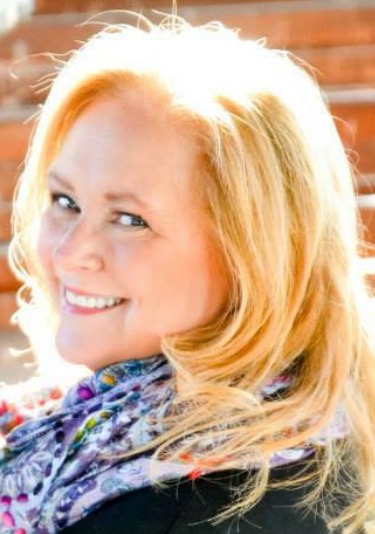
Child care resource and referral (CCR&R) agencies are sometimes well-kept secrets in the world just peripheral to child care. We recently found this to be true when my colleagues, Courtnie Wheeless, Florida Office of Early Learning, Marlana Kelly and Lei Kendale, Child Care Aware® of America (CCAOA) External Affairs, and I accepted an invitation to present at the 2018 NEW PATHS Conference in Orlando, Florida.
Our goal was simple: To share resources and knowledge to increase effectiveness of services to children and families in the areas of early child education and child care. Our objectives were to provide an overview of the work and mission of CCAoA and the Florida Office of Early Learning, to introduce CCR&Rs as a resource for eligibility workers, to provide practical application for a child care search, and, finally, to learn from the field of eligibility workers how our work intersects.
About NEW PATHS
Founded in 1975, the National Eligibility Workers Association (NEW PATHS) works to promote, "The improvement of knowledge, skills, and overall professionalism of human services professionals...[by]…providing information, training, and a network of services and support.” For the past 43 years, this national association has met regularly to network, learn, share, and support.
Eligibility workers are the group of professionals tasked with determining who does and does not qualify for specific government aid. Some of their tasks include reviewing records, conducting interviews with clients, assisting clients in identifying additional resources, and providing follow-up to all assistance received. We find eligibility workers in hospitals, DHS offices, Social Security Administration offices, federally qualified health centers, and other places that offer government aid.
During this conference we shared the mission and vision of Child Care Aware® of America and the importance of the work of CCR&Rs including the Early Learning Coalitions in Florida. We were very happy to hear from attendees that they believed they could use this information as they referred clients to services—specifically as they worked with families needing child care. Ninety percent of attendees we spoke with were not aware of the incredible work of CCR&R’s and felt that they wanted to connect with their local CCR&R to learn more.
How Do Eligibility Workers and CCR&Rs Intersect?
Although regulations vary from state to state, most public assistance programs (TANF, SNAP, etc.) require that a parent either work or attend college full-time in order to be eligible for aid. Recent legislation in some states requires employment in order to retain Medicaid expansion benefits for health coverage. Access to child care becomes extremely critical for these parents who, in order to remain on public assistance, must maintain employment and/or finish that important college degree.
Given the list above of places where eligibility workers are found, it’s easy to see that their work has a profound impact on the lives of children and families. One attendee from a Midwestern state responded, “I refer my clients to the local CCR&R all the time but I didn’t have a clue about all they do. I’m going to contact them when I return home and schedule a time for them to speak to my staff.”
What We Learned
Eligibility workers are eager to learn about and access more resources to help their clients be successful. Their jobs are demanding and, as front-line workers, very taxing. Many times they sit behind a locked door (for security reasons) and see clients in varying degrees of desperation (eviction, utility disconnection, homelessness, needing healthcare, to name a few) one-after-another, all-day-long. (One attendee related to us that a client had thrown bleach on her due to an unsatisfactory eligibility determination.)
So, the question remains: How do we connect the resources of a CCR&R to the day-to-day work of eligibility workers?
1. Visit Your Local DHS Office
While it is doubtful that you will be able to simply walk into DHS (Department of Health/Human Services) and see an eligibility worker (their appointments are scheduled weeks and months out), it is highly likely that there is a break room within that office. Try taking a basket of snacks by with your business card attached. (Be sure they are store-bought and individually wrapped. Remember, security issues abound.) Add a note that expresses appreciation for their hard work and ask them to call you to learn more about child care resources for their clients.
2. Create a Flyer with the Words: “Need Child Care? We Can Help!"
Clients in a state of desperation and workers who are stretched to capacity don’t really have time to sort through a lot of verbiage, but they do understand these words. Simple and to the point. Include bullet points of how you can help them (minus the acronyms that we all know and love—this group will not be familiar) and, most importantly, how they can quickly reach you.
3. Visit a WIC Office
Typically, the wait time for eligibility determination in a WIC (Women, Infant, and Children) office is not short, so this is a great place to have brochures advertising your great work as a CCR&R. This is also a great place to provide consumer education for parents who are there waiting because they want what is best for their young children.
More than once during our time at NEW PATHS we heard someone say, “I wish I’d known about CCR&R’s and how to search for child care when I was a front-line worker. I would have been a much better resource for my clients.” In the spirit of our 2018 Leadership Institute, Leading Boldly-Accelerating Change, reach out to help your local eligibility workers and harness the power of your CCR&R! Children and families are waiting.






